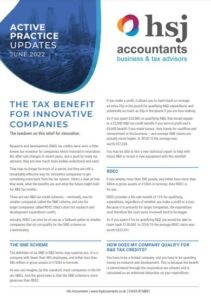The lowdown on this relief for innovation.
Research and development (R&D) tax credits were once a little-known tax incentive for companies which invested in innovation. But after rule changes in recent years, and a push by many tax advisers, they are now much more widely understood and used.
They may no longer be much of a secret, but they are still a remarkably effective way for innovative companies to get something extra back from the tax system. Here’s a look at how they work, what the benefits are and what the future might hold for research and development (R&D) tax credits.
There are two R&D tax credit schemes – nominally, one for smaller companies called the SME scheme, and one for larger companies called RDEC (that’s short for research and development expenditure credit).
Actually, RDEC can also be of use as a fall-back option to smaller companies that do not qualify for the SME scheme on a technicality.
The SME scheme
The definition of an SME in R&D terms may surprise you. It is a company with fewer than 500 employees, and either less than €86 million in gross assets or €100m in turnover.
As you can imagine, by this standard, most companies in the UK are SMEs. And the good news is that the SME scheme is more generous than RDEC.
If you make a profit, it allows you to claim back on average an extra 25p in the pound for qualifying R&D expenditure, and potentially as much as 33p in the pound if you are loss-making.
So, if you spent £20,000 on qualifying R&D, that would equate to a £5,000 R&D tax credit benefit if you were in profit and a £6,600 benefit if you made losses. Very handy for cashflow and reinvestment in the business – and average SME claims are actually much higher. In 2018/19 the average was worth £57,228.
You may be able to hire a new technical expert to help with future R&D or invest in new equipment with this windfall.
Continue reading…



